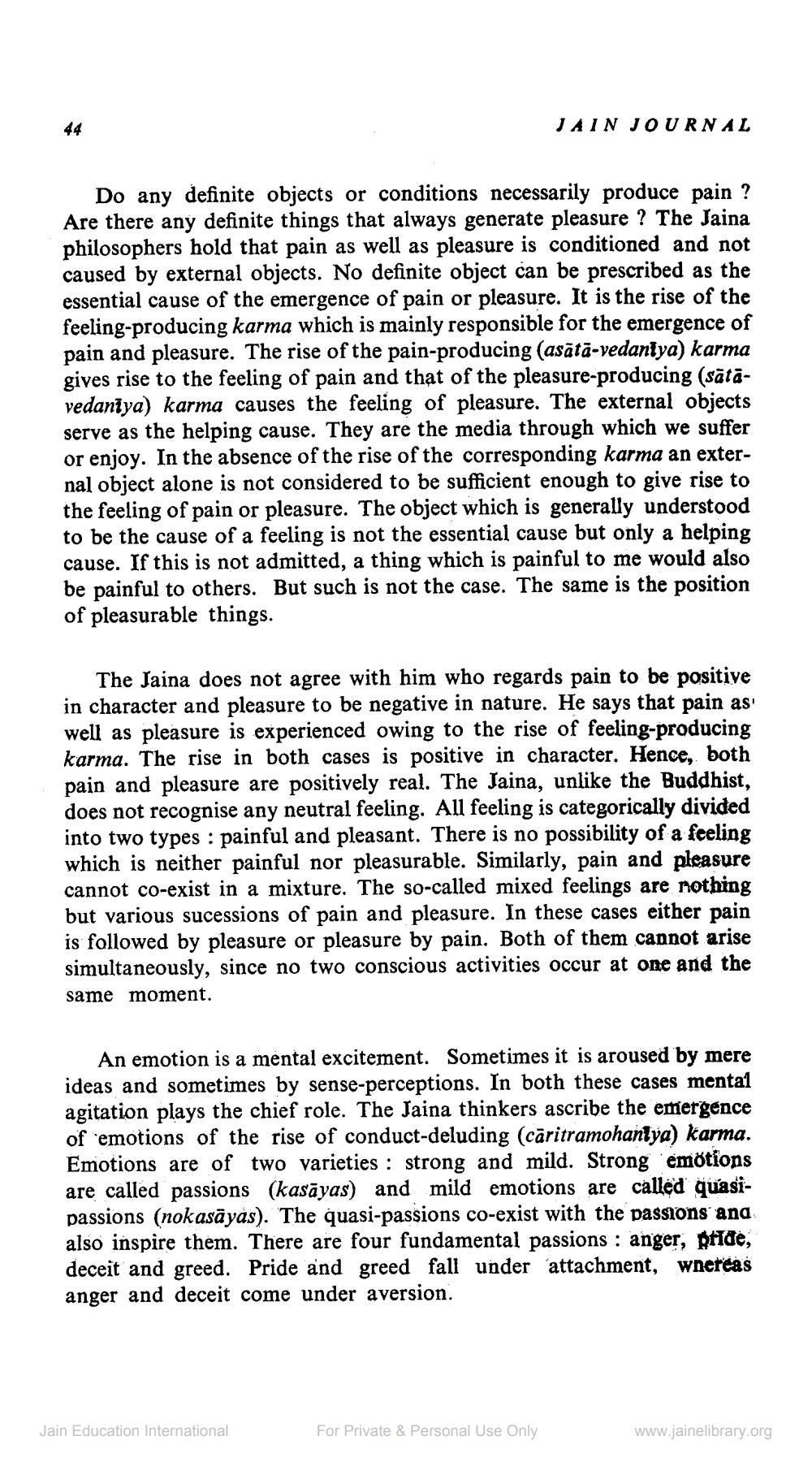Book Title: Jain Journal 1981 10 Author(s): Jain Bhawan Publication Publisher: Jain Bhawan Publication View full book textPage 7
________________ 44 Do any definite objects or conditions necessarily produce pain? Are there any definite things that always generate pleasure? The Jaina philosophers hold that pain as well as pleasure is conditioned and not caused by external objects. No definite object can be prescribed as the essential cause of the emergence of pain or pleasure. It is the rise of the feeling-producing karma which is mainly responsible for the emergence of pain and pleasure. The rise of the pain-producing (asātā-vedantya) karma gives rise to the feeling of pain and that of the pleasure-producing (sātāvedaniya) karma causes the feeling of pleasure. The external objects serve as the helping cause. They are the media through which we suffer or enjoy. In the absence of the rise of the corresponding karma an external object alone is not considered to be sufficient enough to give rise to the feeling of pain or pleasure. The object which is generally understood to be the cause of a feeling is not the essential cause but only a helping cause. If this is not admitted, a thing which is painful to me would also be painful to others. But such is not the case. The same is the position of pleasurable things. JAIN JOURNAL The Jaina does not agree with him who regards pain to be positive in character and pleasure to be negative in nature. He says that pain as well as pleasure is experienced owing to the rise of feeling-producing karma. The rise in both cases is positive in character. Hence, both pain and pleasure are positively real. The Jaina, unlike the Buddhist, does not recognise any neutral feeling. All feeling is categorically divided into two types: painful and pleasant. There is no possibility of a feeling which is neither painful nor pleasurable. Similarly, pain and pleasure cannot co-exist in a mixture. The so-called mixed feelings are nothing but various sucessions of pain and pleasure. In these cases either pain is followed by pleasure or pleasure by pain. Both of them cannot arise simultaneously, since no two conscious activities occur at one and the same moment. An emotion is a mental excitement. Sometimes it is aroused by mere ideas and sometimes by sense-perceptions. In both these cases mental agitation plays the chief role. The Jaina thinkers ascribe the emergence of emotions of the rise of conduct-deluding (caritramohanlya) karma. Emotions are of two varieties: strong and mild. Strong emotions are called passions (kasayas) and mild emotions are called quasipassions (nokasayas). The quasi-passions co-exist with the passions and also inspire them. There are four fundamental passions: anger, pride, deceit and greed. Pride and greed fall under attachment, whereas anger and deceit come under aversion. Jain Education International For Private & Personal Use Only www.jainelibrary.orgPage Navigation
1 ... 5 6 7 8 9 10 11 12 13 14 15 16 17 18 19 20 21 22 23 24 25 26 27 28 29 30 31 32 33 34 35 36 37 38 39 40 41 42 43 44 45 46 47 48 49 50 51
